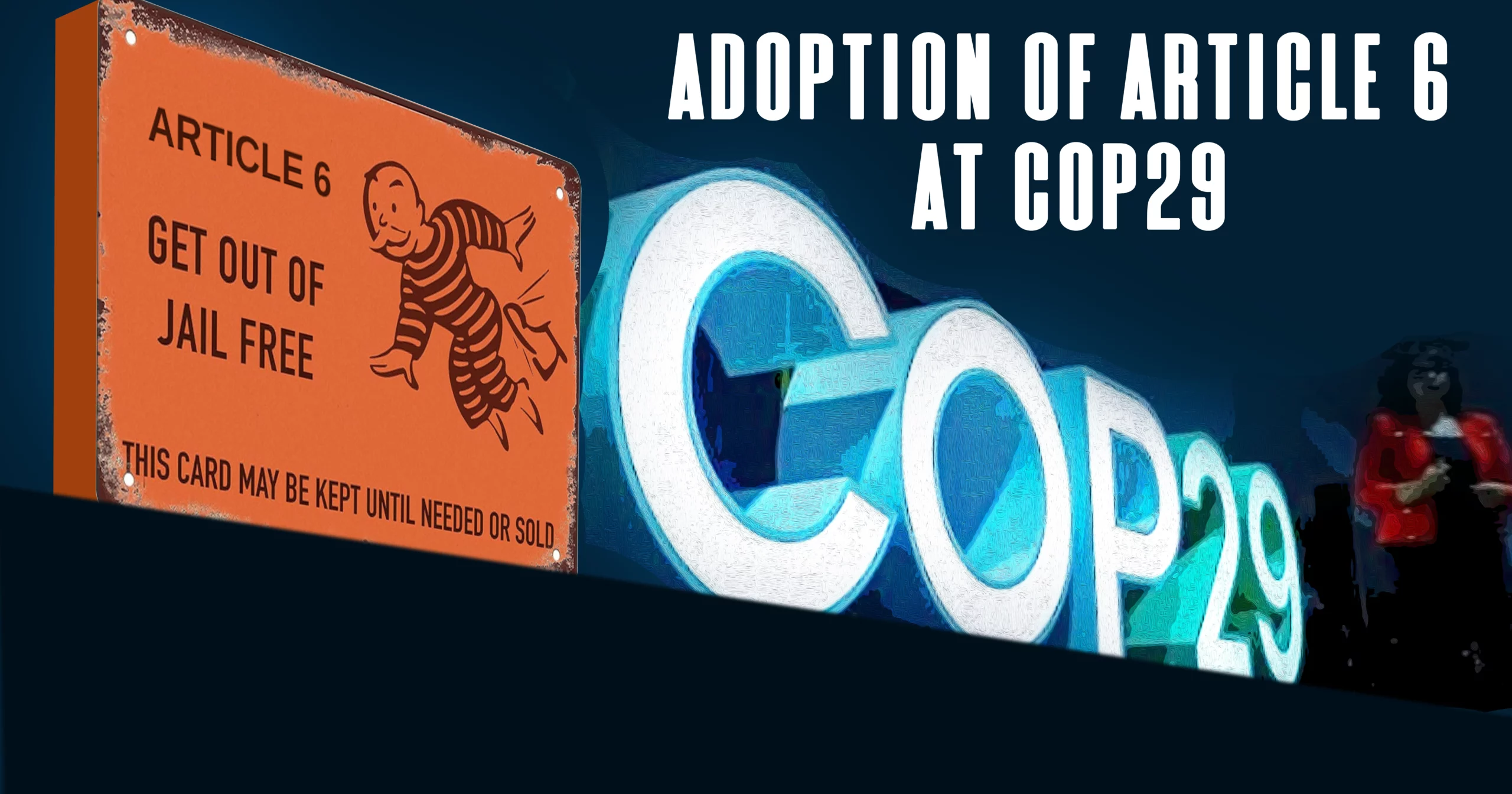
Context (DTE):
At COP29 in Baku, nations achieved a significant milestone by adopting Article 6 of the Paris Agreement after nearly a decade of negotiations. Article 6 provides a framework for international carbon markets, enabling countries to collaborate in achieving their Nationally Determined Contributions (NDCs) and advancing global climate goals.
Components of Article 6
- Article 6.2: Decentralized, Bilateral Agreements
- Facilitates country-to-country carbon credit trading through bilateral or multilateral agreements.
- Allows flexibility in carbon market mechanisms while ensuring transparency and environmental integrity.
- Article 6.4: Global Carbon Market under UN Supervision
- Establishes a centralized global carbon market regulated by the UN.
- Ensures uniform standards for credit issuance, monitoring, and reporting, similar to the Kyoto Protocol’s Clean Development Mechanism (CDM).
Advantages of Adopting Article 6
- Transparency and Accountability:
- Countries must disclose approved mitigation outcomes and report inconsistencies publicly, fostering trust and compliance.
- Financial Mobilization:
- Encourages investments to meet new climate finance goals under the New Collective Quantified Goal (NCQG).
- Global Market Integration:
- Promotes standardized rules for carbon trading under UN oversight, enhancing market stability and credibility.
- Support for Developing Nations:
- Helps finance afforestation, clean energy, and emission reduction projects, accelerating climate action in developing countries.
Issues with Article 6
- Double Counting:
- No mandatory requirement for countries to disclose mechanisms that prevent duplicate reporting of carbon credits, which may undermine emission reduction targets.
- Risk Reversals:
- Inadequate monitoring systems to address instances where stored carbon is released back into the atmosphere due to events like forest fires or land-use changes.
- Weak Accountability:
- Lacks stringent penalties or consequences for misreporting or fraudulent use of carbon credits, which can compromise market integrity.
- Operational Delays:
- Article 6.4 is not expected to be fully operational until 2026, delaying the benefits of a global carbon market.
- Regulatory Concerns:
- The transition from the Kyoto Protocol’s CDM to Article 6.4 lacks rigorous checks for additionality (ensuring that projects result in genuine, additional emission reductions), risking the inclusion of low-quality or non-additional projects.
Challenges Ahead
- Global Coordination:
- Aligning diverse national interests, standards, and regulatory frameworks to ensure a unified and functional global carbon market.
- Scientific Rigour:
- Ensuring that standards for carbon credits reflect the best available science, particularly for addressing reversal risks and ensuring additionality.
- Market Quality:
- Preventing the rise of “Cowboy Carbon Markets”—unregulated or poorly governed markets with low-quality carbon credits that undermine environmental integrity.
Way Forward
- Strengthening Transparency:
- Mandate detailed reporting of mitigation outcomes and enforce mechanisms to prevent double counting of carbon credits.
- Improved Monitoring:
- Develop advanced tools and methodologies to monitor reversal risks and quantify mitigation outcomes accurately.
- Phased Rollouts:
- Implement Article 6.4 gradually, allowing time for testing and adaptation of new standards and mechanisms based on evolving science and climate needs.
- Capacity Building:
- Provide financial and technical support to developing nations to implement Article 6 mechanisms effectively and with integrity.
- Global Collaboration:
- Foster trust and cooperation among nations by establishing clear rules, equitable frameworks, and mechanisms for dispute resolution.
- Public Engagement:
- Increase awareness among stakeholders, including businesses, civil society, and the public, about the potential and limitations of carbon markets.
- Accountability Framework:
- Introduce robust mechanisms to enforce penalties for misuse or fraudulent activities, ensuring the environmental integrity of the carbon markets.




